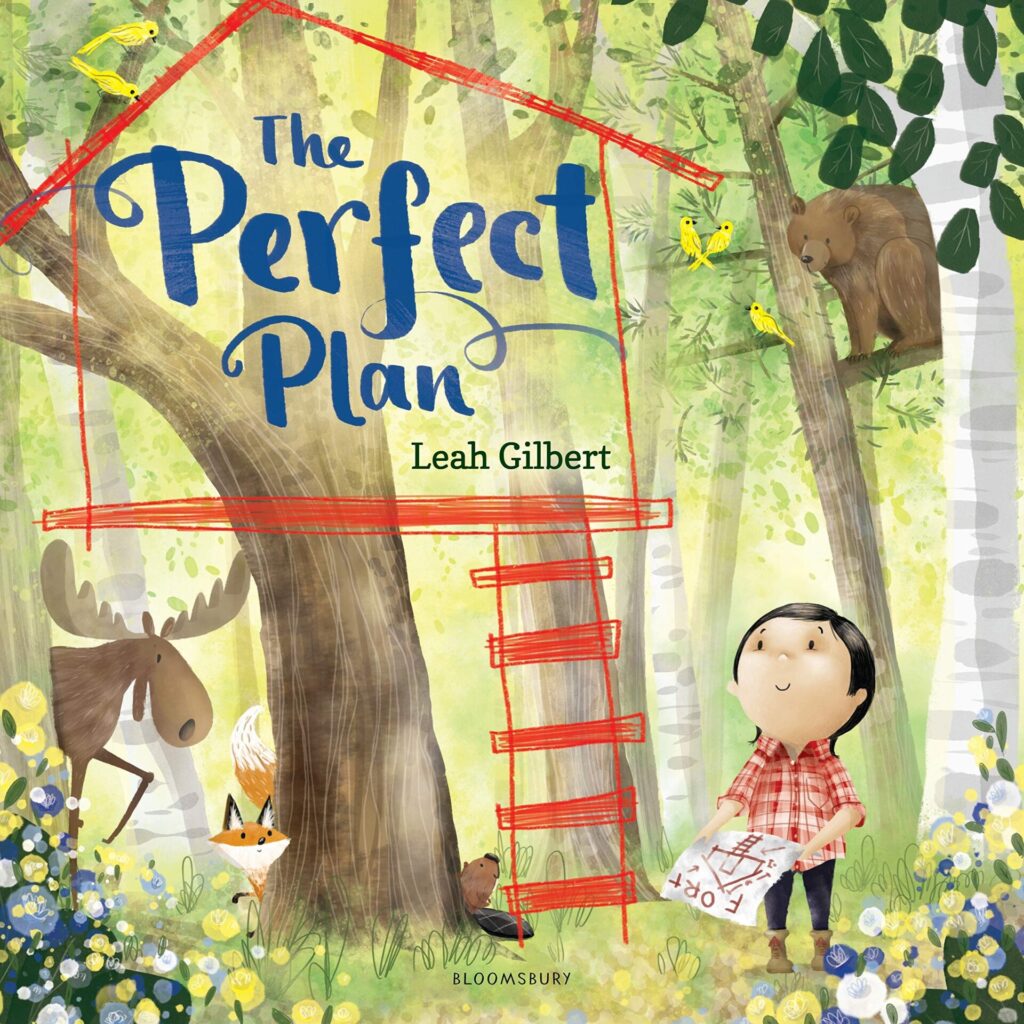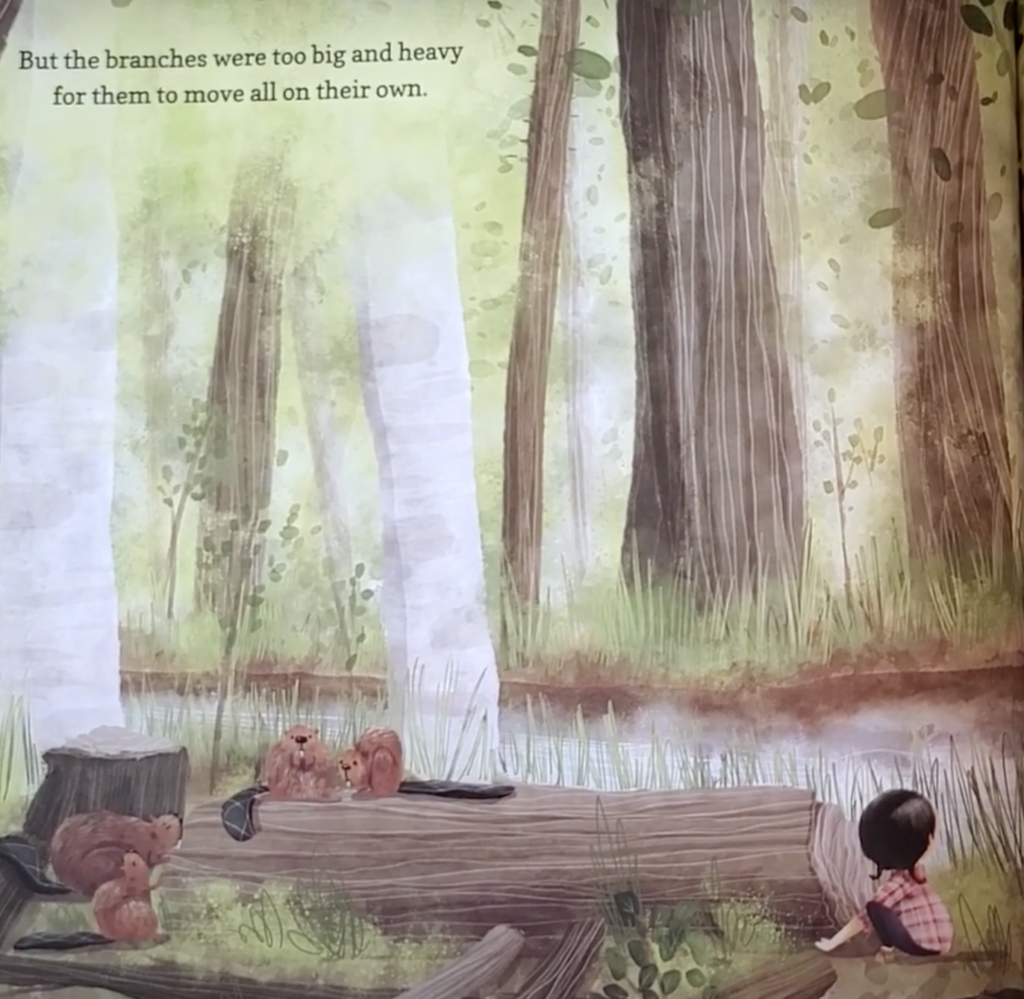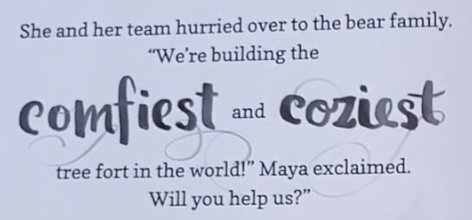Why I Picked It Up:

I came across this one while reading my morning blogs. I didn’t think much of it at first, but the title kept stewing in my head, so I checked it out.
Why I Finished It:
Maya comes up with a great idea for the perfect fort in this sweet story. Unfortunately, she is lacking some abilities such as speed, strength, height, etc. Thus, she enlists the help of her animal friends. This was a really interesting perspective of animals in the wild and that each one has strengths and abilities that could help others. As a storm sweeps in and Maya worries about her fort, there is a bit of a plot twist at the end. As a result, it is certain to keep the students’ attention and help them make connections to their own lives.
Who I Would Give It To:
This picture book would be a great addition to any primary-level library. It connects well with The Most Magnificent Thing and would be great for teaching STEAM and a growth mindset.
Integration Ideas:
Making Predictions
Each time Maya realizes that she needs help, she considers which animal could help her with the job. Students could predict which animal might help her with each struggle.

After reading this page, ask students to brainstorm which animal might be able to help Maya? Have them think about which animals are strong enough to carry large logs around. Make sure to have each student justify their response. Then after reading the next page, students should confirm or adjust their predictions.
Making Connections and Leadership (Social Studies)
The Perfect Plan is quite similar to The Most Magnificent Thing by Ashley Spires, as both main characters embark on a mission to bring their visions to life. There are some key differences, however, in that the girl in Spires’s book works alone and gets past her struggles by giving time and continued effort, whereas Maya asks for help. Both methods of accomplishment have obvious strengths, but this is a great conversation to have with students, no matter how young.

Ask students, “Is it better to do things alone or ask for help?” Have students talk about this question for as long as they can. Next, ask the students, “Which way makes a better leader?” This directly connects students to the social studies standards that have students think about the qualities of leaders. I wouldn’t stop there, though! Have the students think of different leaders they know and whether they work alone or ask for help.
Word Choice: Adjectives
After choosing each animal, Maya describes it with two high-powered adjectives.


When introducing new vocabulary, students really need to make it their own. The easiest way to do this is to have them discuss the word and use it in a context they are familiar with already. So, for “strongest and sturdiest”, we would start by discussing the nuances of the two words. What is the difference between saying something is strong and something is sturdy? Throughout the discussion, students should think about what they know or have that is strong and then consider if it is sturdy too. The question is, is everything that is strong also sturdy? This discussion will surely solidify the words for your students, but I would not stop there. Make an anchor chart or personal adjective dictionary!
Superlative Adjectives
Don’t stop after learning the new adjectives on each page, now discuss the fact that they are all superlative adjectives. Take the words and have students change the endings to make the words all three levels, “strong, stronger, strongest” or two levels, “comfy and comfiest”
Conventions: Simple Sentences and Verbs
As always, I teach grammar by using mentor sentences from books we are reading throughout the week. I noticed this story would be great to teach simple sentences. Included in teaching simple sentences are subject, verb, ending punctuation, and complete thoughts. You can teach all of this or a part of this.
Some possible mentor sentences you could use are:
- “She had an idea.”
- “She ran to the stream.”
- “Maya and her team hurried over to the moose.”
- “The wind whistled and billowed.”
Make one of those sentences visible to the students and then ask them what they notice. Any time they mention something they notice, say yes and quickly explain the rule. Example; “That’s right! This is a sentence, because it has a subject, verb, and is a complete thought, so we put ending punctuation at the end.”
Think of it this way, if you repeat this phrase enough, they will pick it up. It’s quick and painless, and repetitive!






Leave a Reply